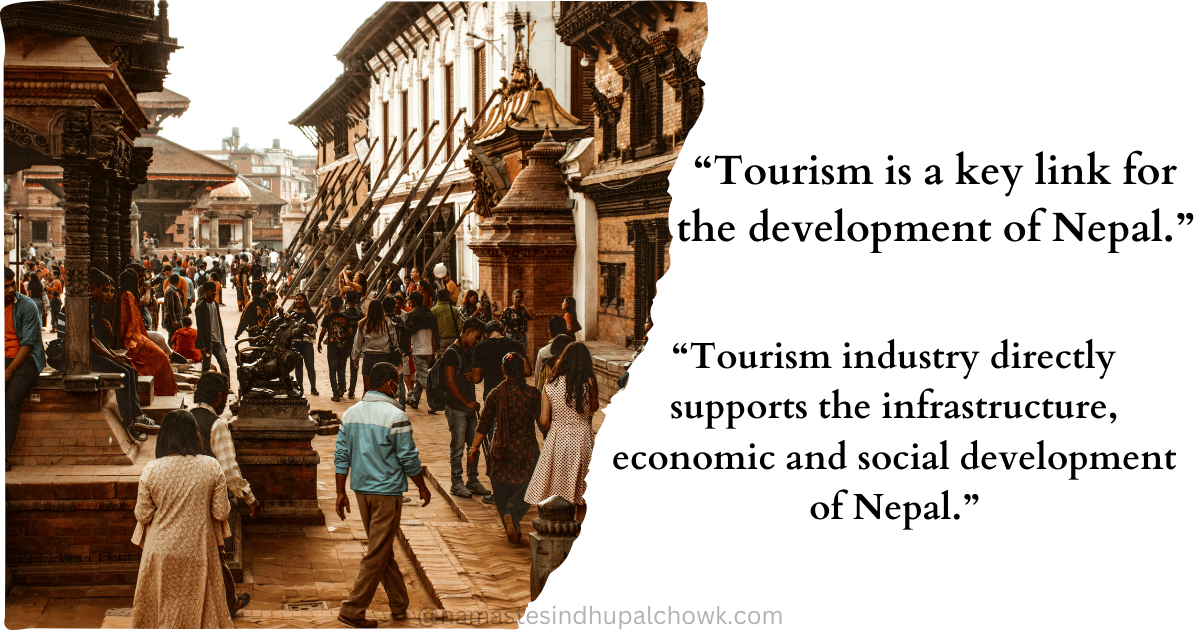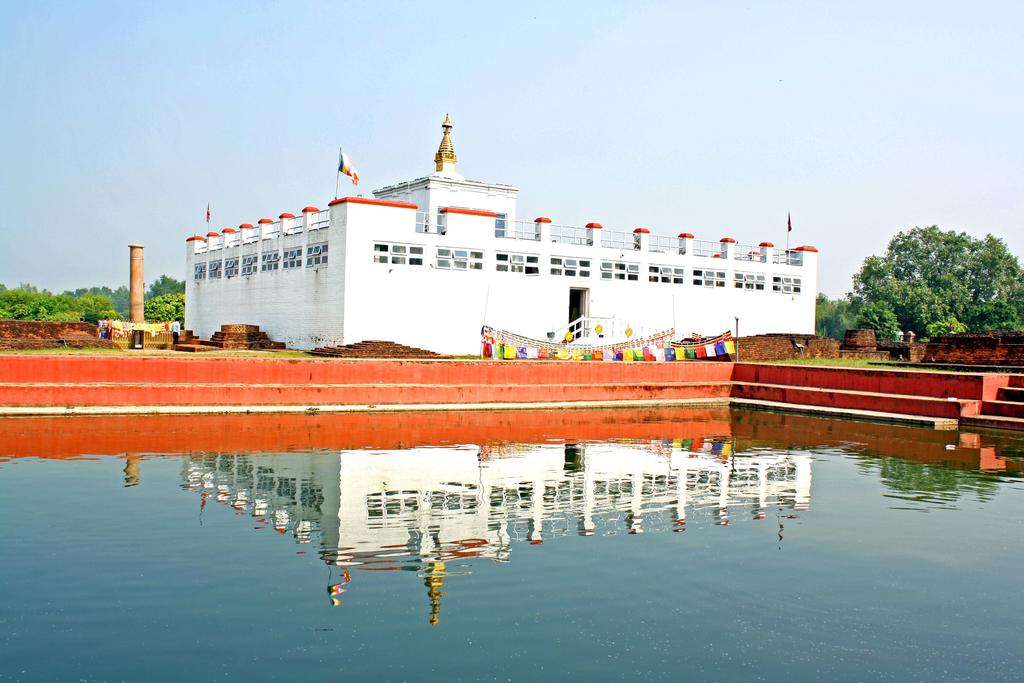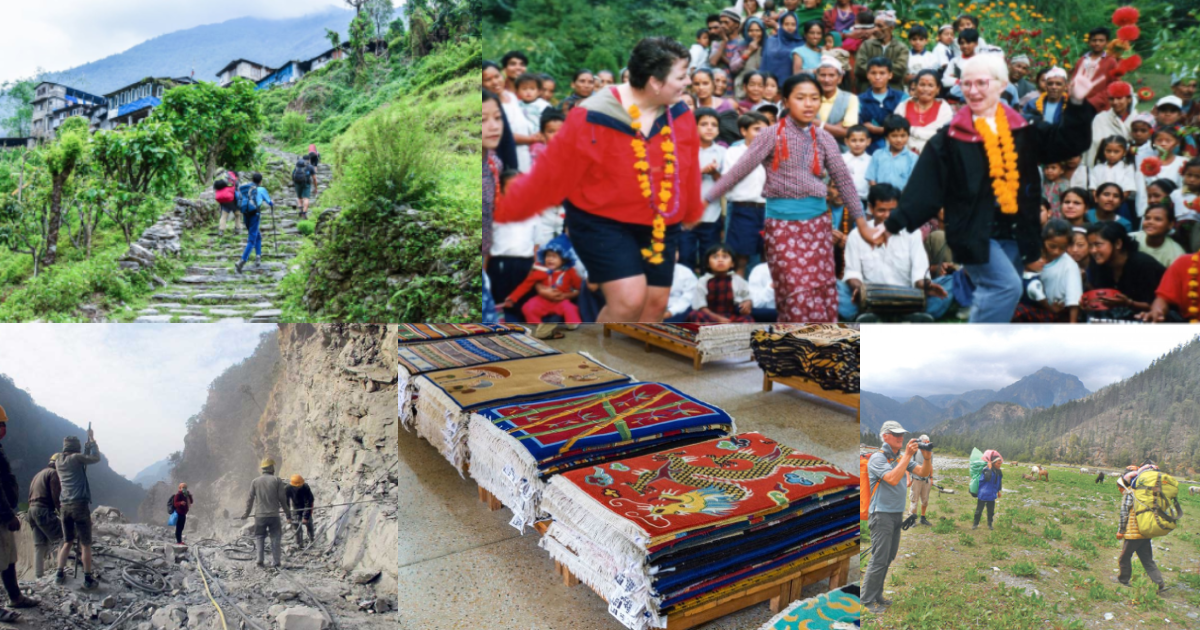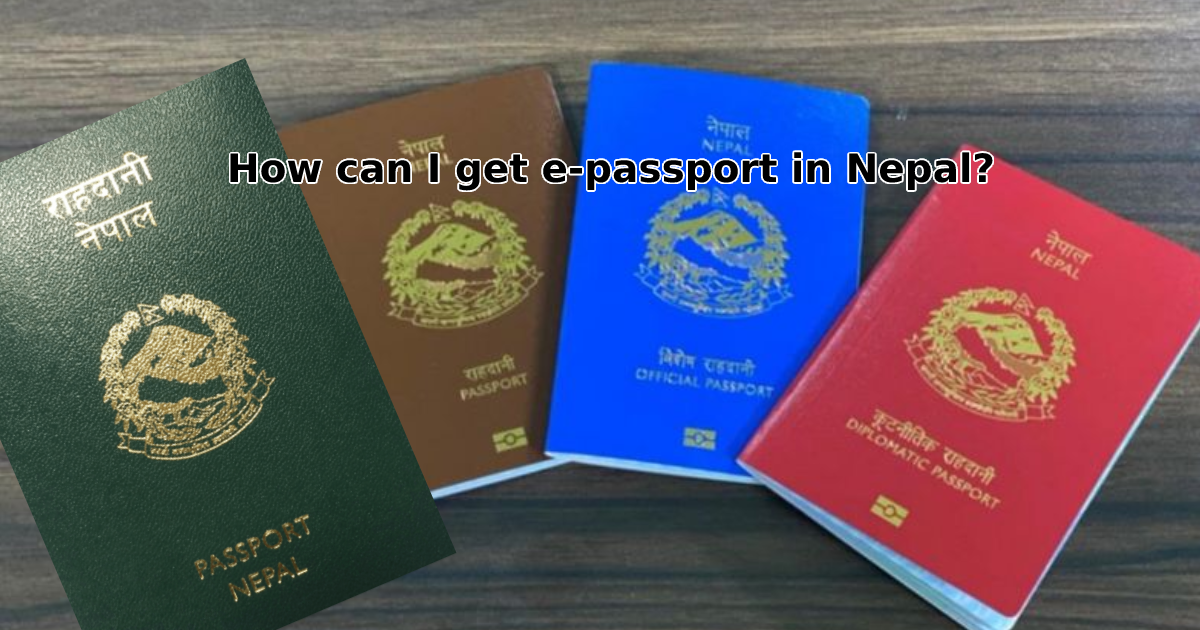Nepal is one of the must-visit tourist destinations in the world. It is located in the arms of the Himalayas at the North Pole in the world picture. Everest, the world's highest peak, is located in the Solukhumbu district of Nepal. And the sky of Nepal is filled with thousands of small and big mountain peaks. Lumbini, the birthplace of Lord Gautam Buddha, the ambassador of world peace and the star of Asia, is another identity of Nepal. Capital Kathmandu is known in the world market as “the city of temples”. From a cultural point of view, Nepal is a garden of thousands of flowers.
Multi-ethnic, multi-religious, multi-cultural, and multi-lingual community living here is the another characteristic of Nepal. Natural resources of Nepal are another potential means of tourism. The rivers, forests, mountains, Hills, communities, daily life and places here are very wonderful. Nepal is a real heaven. Who is not attracted by heaven?
Activities that can be done in Nepal attract foreign and domestic tourists. The natural environment, community, art, culture, customs, language, and geography of this country really has the ability to draw all the people towards it. That is why tourism in Nepal has a lot of justification.
What are the importance of tourism industry for development of Nepal?
Tourism has great importance in any country of the world. Through tourism, some countries have drawn a blueprint for high economic, social, and technological development in a short period of time. Even if we look at the past data, internal and external tourism has brought a big upheaval in the economic activity of Nepal. Thousands of tourists from different countries come to Nepal every year. The activities carried out by those tourists in Nepal have directly benefited many aspects.

Let's discuss about the importance of tourism industry for development of Nepal.
Read Also: Tourism in Nepal - Places to visit, Things to do, Types of tourism
1. Generating employment
The tourism industry helps create employment opportunities in any economy. Both domestic and international tourism is a source of employment. Human resources are required for hotels, transportation, homestays, and guides, which fall under the tourism industry. Compared to the past, tourism is flourishing in Nepal. At the same time, infrastructure development is also increasing in this area. As a result, the need for human resources in this industry is also increasing day by day.
According to the 2019 report of the World Travel and Tourism Council, 1.16 million Nepalese have directly and indirectly received employment opportunities from the tourism industry. Similarly, in 2020, employment in Nepal's tourism sector dropped to 1.03 million due to Covid. Which is 6.9% of total employment. According to the 2021 report of the World Travel & Tourism Council, 1.06 million Nepalese have directly and indirectly received jobs from tourism, which is 6.9 % of total employment.
If it continues to grow at this rate, the report estimates that 1.325 million people will get sick in the tourism industry by 2027 AD.
The government has the foresight to create more jobs by bringing the necessary plans and policies for the further growth and development of the tourism sector. Lately, due to Covid-19, Nepal's tourism sector has been very effective but is slowly recovering.
The development of the tourism sector means an increase in employment. If the tourism sector can be developed in a strong manner, Nepali people would be able to work in their native land without the compulsion to go for foreign employment. Job creation represents overall country development.
2. Foreign currency inflow
Foreign currency is a measure of the strength of any country's economy. Foreign tourism along with foreign employment, and export of goods brings foreign currency in Nepal. Foreign tourism is the best way for Nepal to accumulate foreign currency with low investment. According to the report, in 2021 foreign tourists spent about 135 million US (Rs 15 Billion) in Nepal. Before Corona, the World Travel and Tourism Council made public the data that foreigner tourists spent 856.5 million US dollars in Nepal throughout 2019 AD. The currency spent by foreigners in Nepal is also a source of foreign exchange earnings for the Nepalese government.
3. Development of infrastructure
Internal and external tourism in Nepal has helped in infrastructure development. To develop tourism in any area, it is mandatory to build roads, transport, and hotels. Without that infrastructure, people will not visit that place. One of the objectives of Bhairawa International Airport and Pokhara Regional International Airport is to bring foreign tourists directly to Lumbini and Pokhara respectively.
Due to the tourism industry, hotels with luxurious service facilities have been built at the entrance of Mt. Everest. Along with the identification of new tourist destinations in Nepal, roads, transportation, health, and markets are developing in these new places. The fact that development infrastructures are being built in the villages which are the hubs of tourism has also helped the blueprint of balanced development in Nepal.
4. Global marketing of local products
When domestic and foreign tourists visit a new place, they look for the original products of that place. At the places he/she visited, he used to buy local products as souvenirs. Visitors from other countries have brought pashmina, carpets and various idols as local products from Nepal. Likelywise, The tourism industry has been supporting Nepal's destined trade. Tourism can be considered a means of sending goods made in Nepal to the international market. Buying and selling goods and services produced from one place to another place is also an important activity in the tourism industry.
Read Also: World Heritage Sites of Nepal
5. Exploring Nepal
The tourism industry has helped Nepal as a whole to be known to the world. Tourism has a lot of roles to introduce new tourist destinations, local cultures, customs, and languages from one community to another community. Before the development of the tourism industry, Nepal was not well known at the international level. When foreign tourists started coming to Nepal, through them Nepal became known in the world forum.
6. Cultural Exchange
In the current globalization situation, cultural exchange or learning the culture of one community from another community has become common. Many foreign tourists have learned the Nepali language and culture. And they teach their culture to Nepali people as well. When talking about internal tourism, when a person from ‘Terai’ goes to the Himalayas as a tourist, he/she definitely accepts the Himalayan culture. And vice versa.
7. Worldwide Notoriety
Tourism plays a significant part in advancing Nepal's picture and notoriety as all-inclusive. The country's characteristic excellence, social legacy, and enterprise tourism openings pull in travellers from all over the world. Similarly, Positive encounters and word-of-mouth proposals from sightseers contribute to the country's positive picture, pulling in more guests and speculations within the tourism division.
8. Natural Preservation
Nepal is favoured with breathtaking common magnificence, including the Himalayan mountain extend, national parks, and natural life saves. Tourism in these zones energizes natural preservation and economic hones. The income created from tourism contributes to the assurance of characteristic assets, natural life preservation, and the conservation of sensitive biological systems. It too advances mindfulness among guests and neighbourhood communities about the significance of feasible tourism and they have to be a secure environment.
Recommendation Article: The List of National Park of Nepal9. Local Community Empowerment
Tourism gives openings for neighbourhood communities to take part in financial exercises. Community-based tourism activities enable neighbourhood communities by including them in tourism-related ventures, homestays, and social trades. Furthermore, This inclusion leads to salary era, aptitude improvement, and the conservation of conventional information and hones. Tourism also energizes the development of small-scale and small-scale businesses, profiting nearby business people and cultivating community advancement.
10. Spiritual and Religious Significance
Nepal has immense spiritual and religious significance for millions across the globe. It holds the distinction of being the birthplace of Lord Buddha, the revered founder of Buddhism. Moreover, it is adorned with numerous sacred sites and pilgrimage destinations.

People seeking spiritual enlightenment and a deep connection with their faith gravitate towards places such as Lumbini, where Buddha was born, and Pashupatinath Temple, an esteemed Hindu pilgrimage site. Nepal's serene surroundings and spiritual aura draw in spiritual seekers, contributing significantly to the country's flourishing tourism sector.
11. Educational and Research Opportunities
Nepal's diverse geography and ecology offer abundant educational and research opportunities. Scholars, scientists, and students from various disciplines visit Nepal to study its abundant biodiversity, geology, and cultural heritage. The country's universities and research institutions collaborate with international partners to conduct studies on climate change, wildlife conservation, traditional medicine, and sustainable development. Similarly, These academic collaborations facilitate the exchange of knowledge and solidify Nepal's reputation as a centre for research and learning.
12. Culinary Experiences and Gastronomic Delights
Nepal's culinary heritage is a delectable fusion of flavours influenced by various ethnic groups. Traditional Nepali cuisine tantalizes taste buds with its aromatic dishes, including momo (dumplings), dal bhat (lentil soup with rice), and Gundruk (fermented leafy greens). Food enthusiasts and culinary travellers are enticed to Nepal to relish its unique gastronomy, explore local markets, and engage in cooking classes. Likewise, The promotion of culinary tourism not only showcases Nepal's distinct flavours but also provides support to local farmers, producers, and restaurants.
13. Film and Media Industry
The breathtaking landscapes and vibrant culture of Nepal have captured the attention of filmmakers from all corners of the world. Nepal has served as a picturesque backdrop for numerous international and domestic film productions, mesmerizing global audiences with its natural beauty. The film and media industry not only generates revenue through location fees and tourism promotion but also stimulates local employment and infrastructure development. Similarly, Nepal's inclusion in films and documentaries enhances its visibility and serves as a powerful marketing tool to attract film enthusiasts and curious travellers.
14. Preservation of Ancient & Natural Heritage Sites
The major importance of Tourism in Nepal is the preservation of ancient heritages. We know that Many tourists visit different places in Nepal to observe the heritage sites. Moreover, Nepal has many ancient heritage & natural heritage areas. The income derived from tourism can be allocated to the preservation and restoration of these sites, guaranteeing their preservation for future generations to enjoy.
15. Sustaining the Cottage Industry
Tourism's major importance in Nepal is sustaining the cottage industry in the market. Mainly, the Cottage industry makes & produces creative, attractive, full art production that attracts everyone. Most foreigners buy these types of Nepali products as a gift & for remembering Nepal. Nowadays many Nepali cottage industries generate income by selling their product to tourists. There is a good eco-system between the cottage industry & tourism industry in Nepal. So, the Tourism industry helps to alive cottage industry.
To summarize, tourism is of the most extreme significance to Nepal's socio-economic advancement. It serves as a major supporter of the country's economy, cultivating work openings and reinforcing social conservation, natural preservation, foundation development, universal acknowledgement, and community strengthening. By grasping feasible tourism hones, Nepal can tackle the total potential of tourism while shielding its important common and social resources for the thriving of future eras.







